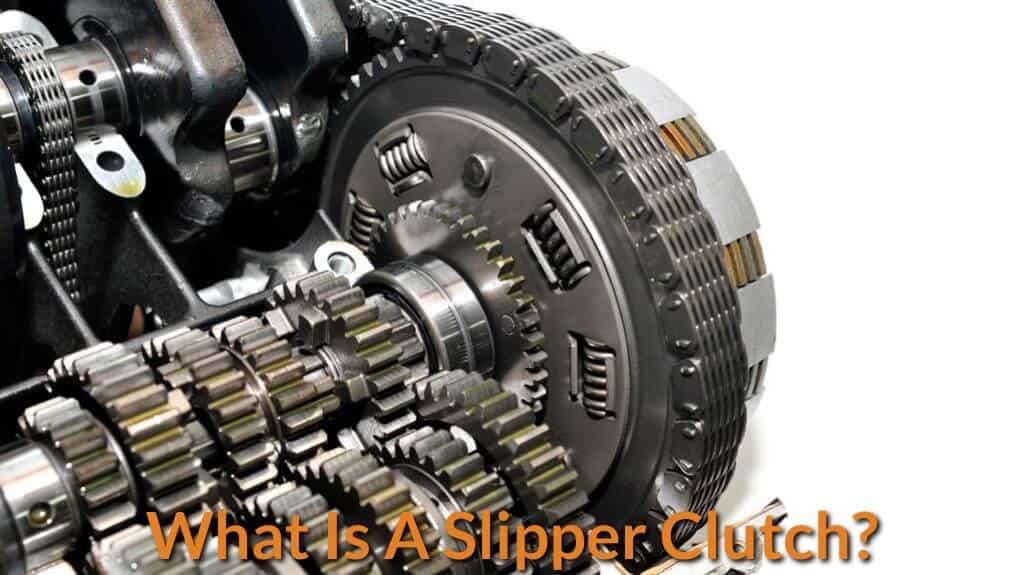June 11, 2021

The slipper clutch is a specialized clutch, also known as “back-torque limiter.” It comes with an integrated freewheel mechanism that is specially developed for performance-oriented motorcycles. It is designed to lessen the effects of engine braking when the motorcycle slows down. Moreover, its primary purpose is to mitigate engine rev as well as that of the rear-wheel hop. Engine rev and rear-wheel hop usually happen when a rider does a hard brake.
Why Motorbike Have To Use Slipper Clutch?
The slipper clutch also works like that of the ordinary clutch. A typical clutch usually engages and disengages the power of the engine to the rear wheel through the gearbox utilizing the clutch lever that is usually on the left handlebar. However, the slipper clutch distinguishes itself from the ordinary clutch by its capacity to tone down the engine braking effects. The effects of engine braking are obvious when a rider slows down or before a motorcycle enters a corner.
This mitigating effect of the slipper clutch allows the rider to smoothly enters a corner. Thus, it enables a rider to lower his lap time by allowing him to easily tackle a bend or a corner turn. In a way, it helps the rider achieve full control of the brake modulation. This allows a rider to engage in brake even when it is almost too late to brake.
Innovation & Development of The Slipper Clutch
The slipper clutch, of course, is very much appreciated by track riders. This is because it allows them to engage in aggressive deceleration. It enables riders to avoid major damages to their gearbox when abruptly shifting down gears at a time. It will enable the clutch to slip partially until the motorcycle’s speed matches the engine speed.
If you are driving on the road, you will find the slipper clutch advantageous. It can help you prevent rear-wheel lockup and sudden loss of traction. This is because it reduces the engine braking effects. In a way, it is helpful to have, especially if you are using higher capacity motorcycles.
How Does the Slipper Clutch Work?
A two-piece clutch boss is present in the slipper clutch. This two-piece clutch boss readily extends once the back-torque forces the boss’s splined part onto the pressure plate. This readily creates a gap between the clutch plates. The force of the engine braking makes the rear wheel’s back torque force to increase.
The splined part found in the two-piece clutch boss is then pushed away from the boss’ pressure plate part. This, in turn, will shove the pressure plate away. This motion then creates a space between the two clutch plates. Afterward, the rear wheel’s back torque force will decrease.
If you are using the ordinary clutch, you will feel that the engine braking force is transmitted towards the rear wheel through the chain drive. This causes the rear wheel to jump, shake, or lose traction.
Thus, the slipper clutch was first conceived to gain more control of the rear wheel, especially when hard braking. You will find this clutch very useful, especially when using higher displacement bikes. Higher displacement bikes, of course, have more massive engine braking force. This massive braking force may cause a rider to lose control of his motorcycle.
The good thing about the slipper clutch is that it disengages when it encounters a higher level of back-torque. It then transmits this torque away from the motorcycle’s engine. Afterward, it engages again and repeats the cycle until it reaches neutrality between the engine and the force of the rear wheel. This specific feature of the slipper clutch helps riders prevent the loss of the rear wheel’s traction.
Pros and Cons of The Use of Slipper Clutch
Although I’ve already talked about the advantages of having a slipper clutch, it would be good to note the disadvantages of having a slipper clutch likewise. But first, let me enumerate the advantages of having a slipper clutch:
Pros:
- Slipper clutch helps mitigate the impact of sudden forces on the transmission’s inside parts, and thus, it lessens the damage on the transmission.
- It can improve performance if it is correctly installed.
- It can help you reduce the work of the suspension by absorbing the engine braking force. This means you can lessen bumpy rides.
- It can help you avoid deadly rear wheel lockup, which usually happens when you experience transmission failure or engine seizure.
- It defocuses the driver from the clutch operation, allowing him to concentrate on other aspects of his driving.
Cons:
- Slipper clutch can be expensive!
- It can also be difficult to install.
- It mitigates the engine braking force, which, in some cases, is needed.
- It needs to be properly adjusted to bring in the desired results.
Nota Bene
The “Hogslayer” a bike created by John Gregory and TC Christenson, carried the distinction of being the first known application of this type of clutch. The Hogslayer held many records during the 1970s. This motorbike was also credited for its technological innovation. Lastly, its top speed was 290 Km/h.
